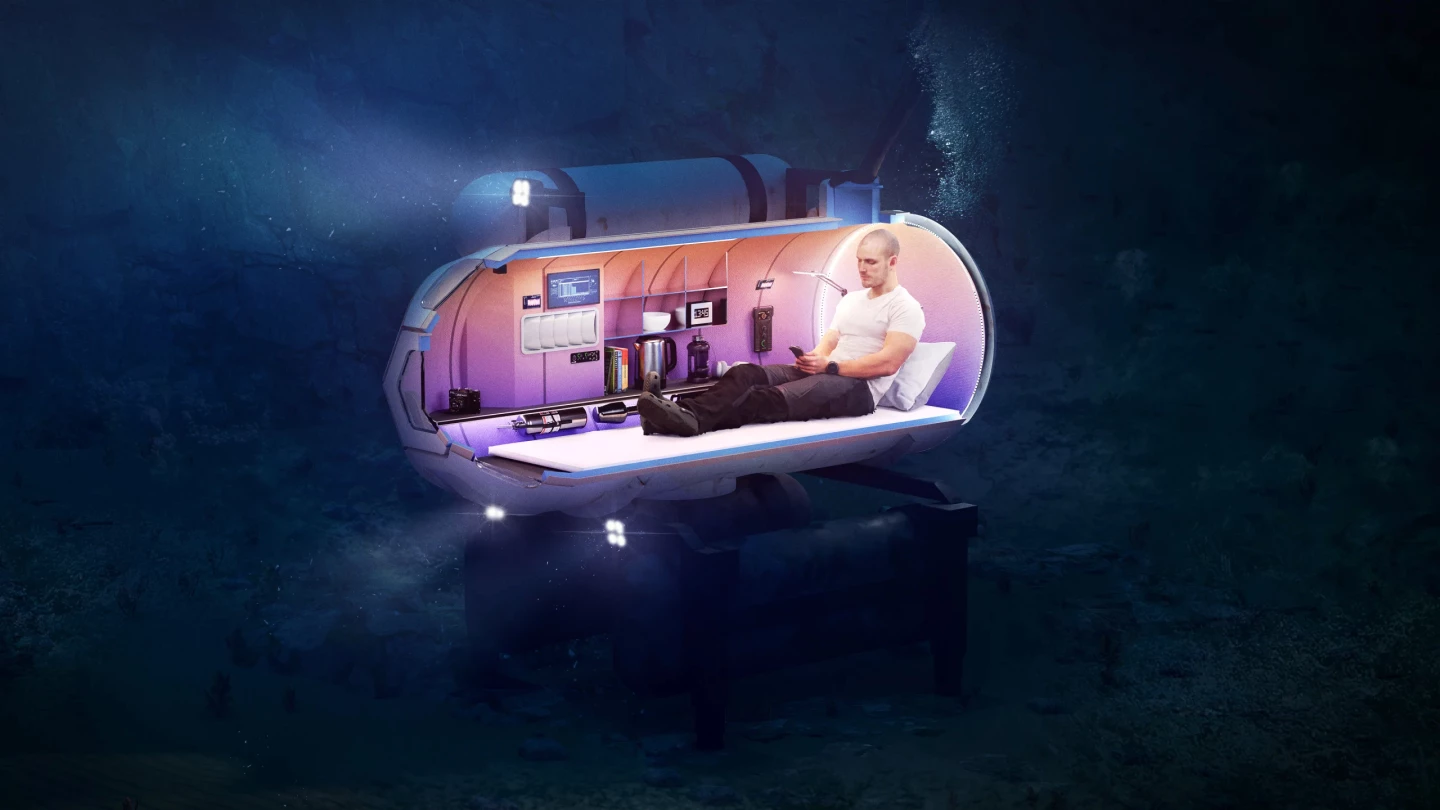Space agencies routinely submerge space-suited astronauts in swimming pools, so they can learn to perform tasks in a (sort of) outer-space-like environment. The UHAB is intended to take things further, by simulating the extraterrestrial habitats in which astronauts may someday live.
Designed by Denmark's SAGA Space Architects, the UHAB (underwater habitat) should ultimately be capable of accommodating up to four trainee astronauts for over a month at a time. For that entire period, it will stay anchored to the seabed.
Like the structures which may someday be built on the surface of the moon or Mars, the UHAB will be completely airtight and self-sustaining. During their stay, the astronauts will thus get a feel for the physical and psychological challenges that may come with living under such claustrophobia-inducing conditions on other planets.
Plans call for the final four-person version of the UHAB to be deployed in European waters sometime in 2026, where it will be available for use by groups such as the European Space Agency. The structure will have a floorspace of 10 square meters (108 sq ft), and be crushproof down to a depth of over 10 meters (33 ft).
And as an added bonus, it could also be utilized by biologists or oceanographers for studies of the marine environment.

SAGA has already successfully tested a one-person demonstrator version of the UHAB. About one month ago, company co-founder Sebastian Aristotelis spent 48 hours in the 1.5-sq-m (16-sq-ft) structure at a depth of 7 m (23 ft) on the seabed near Copenhagen.

"We validated a lot of our ideas and learned things we couldn't have predicted – such as the fact that thermal insulation, which is a closed cell structure, compresses so significantly at a higher pressure that it tears the interior fabrics apart," he told us. "We did see some shrinking in our tests, but experiencing it inside was a great intuitive understanding of the forces at play."
Source: SAGA Space Architects










